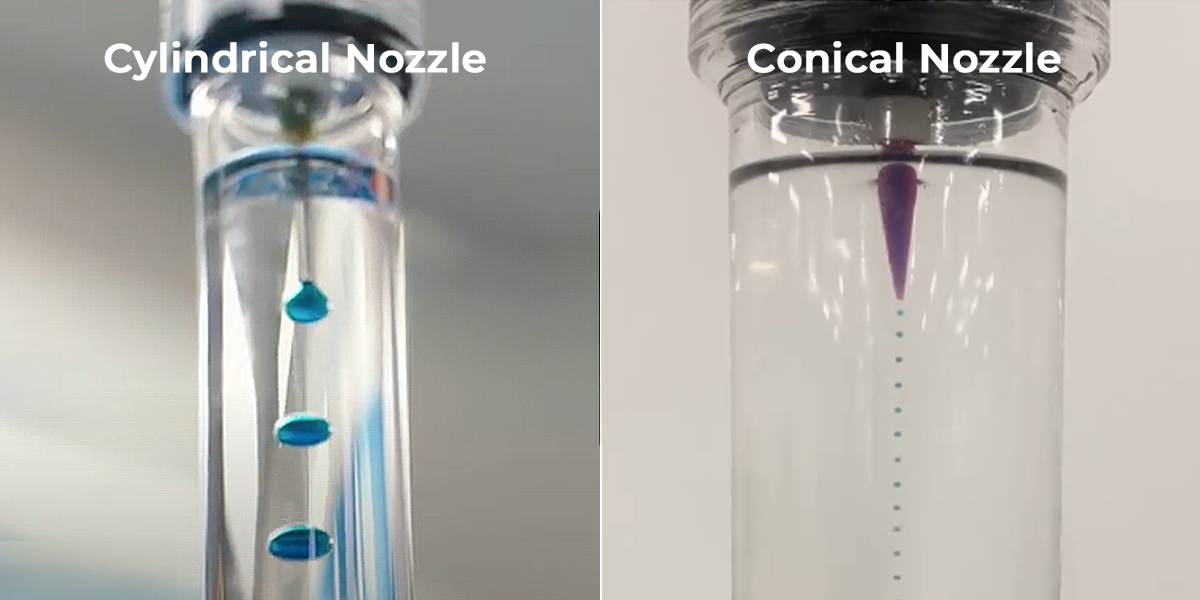Integrating Manifolds into Microfluidic Systems
Key Takeaways: Manifolds reduce system footprint, leak points, and maintenance by consolidating fluidic connections—making them ideal for compact,...

In microfluidic applications, motor selection directly impacts precision, reliability, efficiency, and overall system lifespan. The two primary motor technologies used in the industry - brushed DC and brushless DC (BLDC) - offer fundamentally different architectures and performance characteristics. Understanding their internal structure and commutation mechanics is crucial when selecting the appropriate motor for a given application.
Brushed DC Motor
Structure and Operation
Brushed DC motors use mechanical commutation to convert electrical energy into rotational motion. The stator contains permanent magnets, while the rotor (also called the armature) consists of windings connected to a segmented commutator. Carbon brushes make sliding contact with the commutator, alternately energizing different windings to produce continuous rotation.
Key Components:
Characteristics:
Brushless DC Motor (BLDC) & Stepper Motor
Structure and Operation
Brushless motors use electronic commutation controlled by an external driver. In BLDC motors, the rotor contains permanent magnets, while the stator has fixed windings. Current is switched electronically through a control algorithm based on rotor position (sensed via Hall sensors or inferred via back-EMF).
Stepper motors - used extensively in precision dispensing and continuous metering - are a subset of brushless motors. They feature a multi-pole stator and a toothed rotor, enabling rotation in discrete steps with excellent positional accuracy.
Key Components:
Characteristics:


Comparative Analysis: Impact on Pump Performance
1. Lifespan & Maintenance
2. Control Precision
3. Noise & EMI
4. Efficiency
5. Complexity & Cost
Application Examples: Performance Dictates Fit
Understanding where each motor excels helps clarify selection. Brushed motors are well-suited for durable, low-cost portable devices that run continuously without complex control requirements. These include field sampling pumps, basic dosing units, or disposable devices. Their simplicity and affordability make them ideal in rugged environments where uptime matters more than fine-tuned precision and maintenance intervals are manageable.
Conversely, brushless motors thrive in OEM systems where maintenance is impractical and tight performance specifications must be met consistently over time. This includes high-end laboratory equipment, pharmaceutical metering systems, and automated diagnostic platforms. Here, the brushless motor's precise control, long lifespan, and quiet operation translate into better accuracy, system stability, and lower total cost of ownership.
Fluid Metering’s Motor Integration Strategy
At Fluid Metering, brushless stepper motors are the standard due to their precise fluid displacement capabilities and robust, low-maintenance operation. These motors power many of Fluid Metering's signature valveless piston pumps, where each revolution of the motor correlates with a fixed volume of fluid. This step-based dosing ensures exceptional repeatability across millions of cycles.
By avoiding mechanical commutation, Fluid Metering eliminates wear-prone components, delivering pumps and motors optimized for, but not limited to, pharmaceutical, analytical, and biotech applications. The company’s choice reflects a performance-first mindset: long life, quiet operation, and reliable metering and dispensing.
Conclusion
Brushed and brushless motors each have their place, offering unique advantages based on application needs. In the realm of microfluidics, engineers must weigh the trade-offs between simplicity and precision, cost and control, and serviceability and longevity. Brushless motors, particularly stepper variant, offer standout performance in accuracy and durability, making them ideal for long-term OEM applications where reliability is critical. Meanwhile, brushed motors provide a dependable solution in rugged, low-cost, or disposable devices where advanced control isn’t necessary and maintenance is acceptable.
Bottom Line: There is no one-size-fits-all solution. At Fluid Metering, we offer a variety of motor options, including both brushed and brushless technologies, to match each application’s performance, cost, and maintenance requirements. Our engineering team customizes pump-motor pairings to ensure optimal results based on each specific use case.

Key Takeaways: Manifolds reduce system footprint, leak points, and maintenance by consolidating fluidic connections—making them ideal for compact,...

Key Takeaways: For electrical interface selection in OEM instruments, engineers should prioritize compatibility, power delivery, and noise immunity...

Key Takeaways: For microfluidic nozzle sizing and shape optimization, selecting between cylindrical and conical tips impacts bubble removal,...